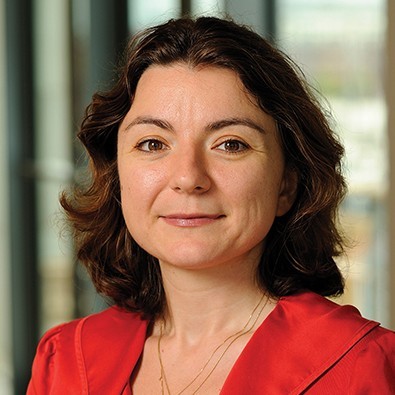 Taxing those who drive in cities can have positive side effects.
Taxing those who drive in cities can have positive side effects.
Emilia Simeonova, assistant professor at the Johns Hopkins Carey Business School, explains why.
Emilia Simeonova, PhD (Economics from Columbia University in 2008) joined Johns Hopkins Carey Business School in 2013 from Tufts University. Between 2011-2012 she was a research fellow at the Center for Health and Wellbeing at Princeton University. Emilia’s research interests in the economics of health care delivery, patient adherence to therapy and the interaction between physicians and patients, racial disparities in health outcomes, the long-term effects of shocks to children’s health and the intergenerational transmission of health. Her research has been funded by the National Institutes of Health, the National Science Foundation, the Swedish Research Council and the Danish Academy of Sciences.
Health Benefits of a Congestion Tax
After Stockholm, Sweden, introduced a “congestion tax” to discourage driving in the center of town, traffic diminished and the pollution level dropped between 5 and 10 percent.
One other result was less expected but still very welcome: The rate of asthma attacks among local children decreased by nearly 50 percent.
Asthma, chronic inflammation of the breathing passages, afflicts people of all ages.
Its onset in childhood can lead to poor lung development, causing breathlessness, chest tightness, wheezing, and other ill effects that can recur over a lifetime.
For our study, my colleagues and I examined official health and environmental data compiled in Sweden from 2004 through 2010.
We focused on health outcomes for children up to six years old.
The Stockholm congestion tax, introduced in early 2006, is to $2.60 per vehicle. It is assessed on weekdays via scanners that gather license-plate information.
Not long after the tax was implemented, a positive impact on health was evident.
In the initial period, visits to health providers for acute asthma symptoms fell from a pre-tax baseline of 18.7 per 10,000 children to 16.4 ― a drop of 12 percent.
A few years later, visits had decreased even further, to 10 per 10,000 children ― a reduction of 47 percent from the baseline.
The health improvement in the children appeared more gradually than the decline in the pollution level.
This suggests that the full health benefits from reduced pollution might not occur immediately.
We concluded that traffic congestion fees in large cities such as Stockholm can have substantial positive effects on children’s respiratory health in the short term. In the long term, these positive effects can be even greater.
